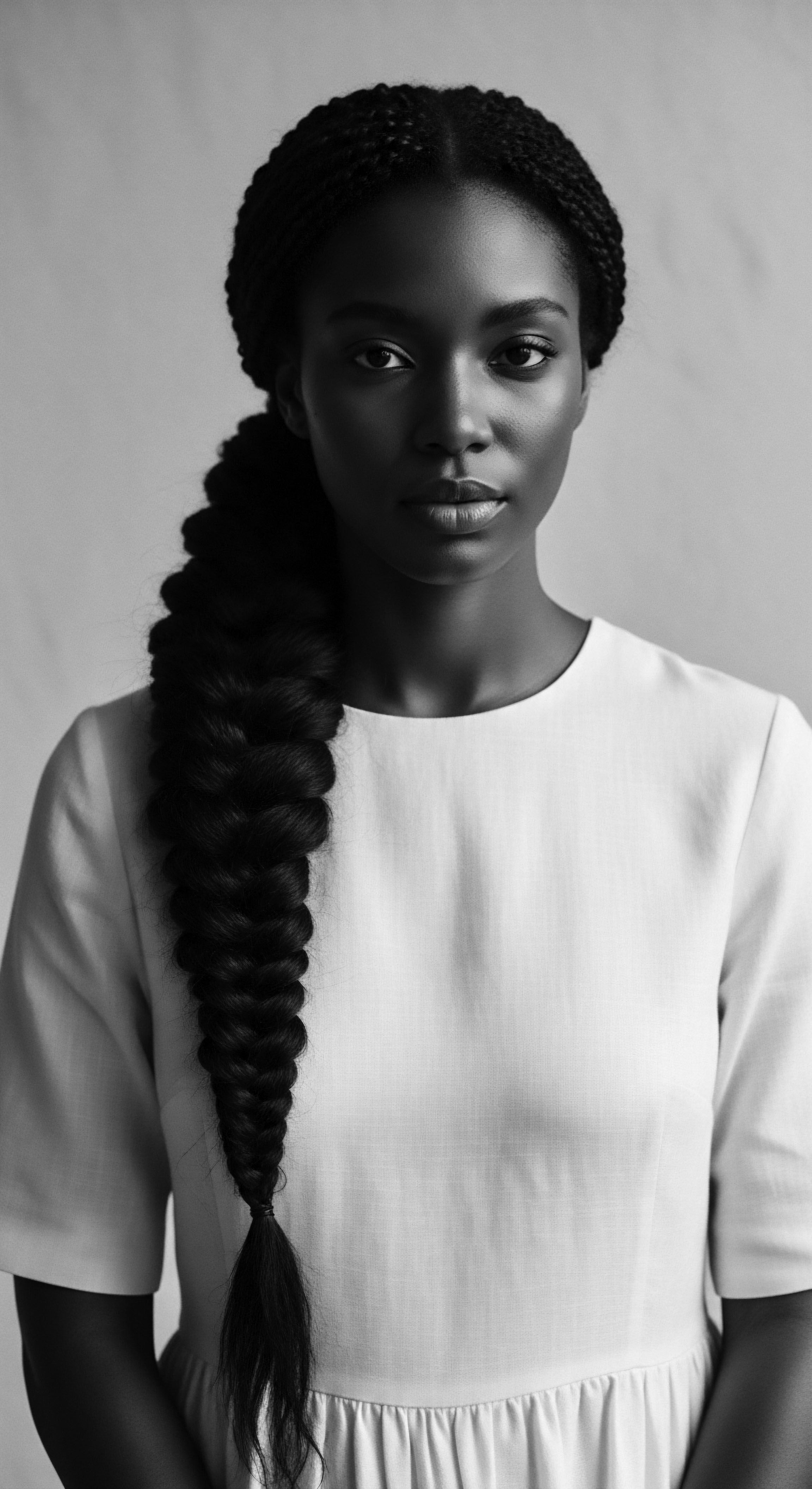
Fundamentals
The intrinsic makeup of a single hair strand, a complex arrangement of biological components, finds its fundamental expression in what we refer to as Keratin Strength. This is not merely a scientific classification; it is a profound declaration of the hair’s inherent resilience, its ability to withstand the myriad forces of the world, and its capacity for graceful movement. At its core, Keratin Strength points to the structural integrity of hair, which is primarily composed of keratin proteins. These proteins, fibrous and robust, are the building blocks, shaping the hair’s form and determining its foundational character.
The outer layer, known as the Cuticle, comprises overlapping, scale-like cells, serving as a protective shield for the hair’s inner structures. Beneath this lies the Cortex, which houses the majority of the hair’s mass, including melanin—the pigment that gives hair its hue—and plays a decisive role in its strength, elasticity, and texture. The innermost layer, the Medulla, a loosely packed region, resides at the hair’s center, though its presence and function vary across different hair types.
For textured hair, this fundamental understanding takes on a deeper, more resonant meaning. The spiraling architecture of coils, kinks, and waves, a genetic legacy passed through generations, directly influences how these keratin proteins align and interact. The unique morphology of the hair follicle, often curved or hooked, shapes the hair shaft into its characteristic patterns, distributing keratin in a way that creates natural bends and turns.
This structural configuration, while lending itself to incredible volume and aesthetic diversity, also presents specific considerations for maintaining the hair’s intrinsic Keratin Strength. The bends and twists in textured strands can sometimes mean that natural oils, produced by the scalp, face a more circuitous path in descending the hair shaft, potentially leading to areas of reduced lubrication and increased vulnerability.
Keratin Strength signifies the deep, inherent resilience of hair, a biological testament to its capacity for endurance and its connection to the earth’s natural rhythms.
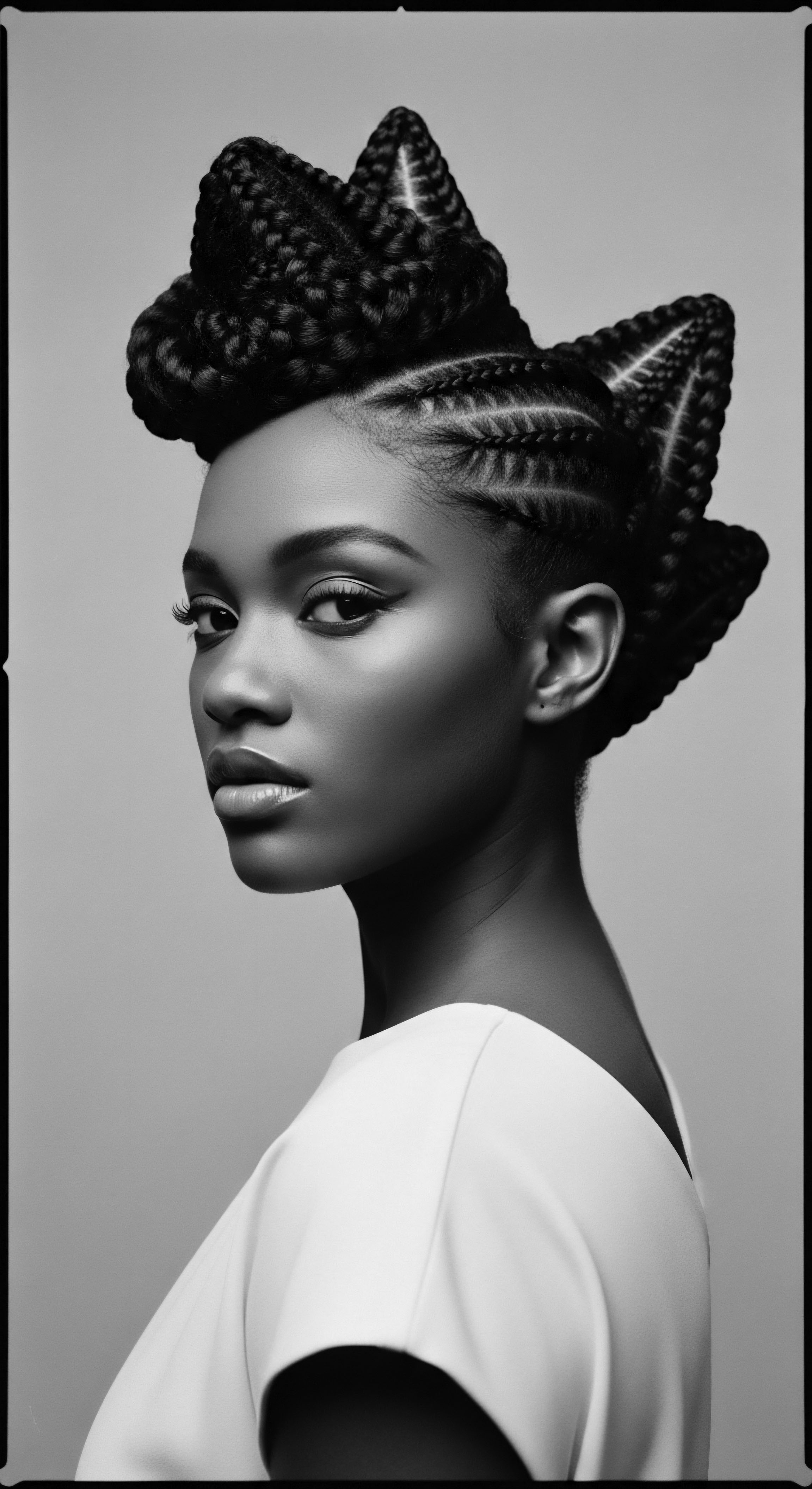
The Hair’s Ancient Core
Long before the advent of modern scientific tools, ancestral communities across the globe possessed an intuitive understanding of hair’s vitality and its capacity for enduring strength. This ancient comprehension, while not articulated in terms of protein structures or disulfide bonds, manifested in meticulous hair care practices that inherently preserved what we now define as Keratin Strength. Consider the deep reverence held for hair in many traditional African societies, where coiffures served as powerful visual markers of identity, social standing, age, and spiritual connection. The very act of styling hair was often a communal ritual, a moment of intergenerational bonding and knowledge transmission.
In these communities, the practices were not merely cosmetic; they were deeply restorative and protective. The application of natural ingredients, such as various plant oils, butters, and clays, speaks to an inherited wisdom regarding hair’s needs. These substances, sourced directly from the earth, were understood to nourish the hair, shield it from environmental rigors, and maintain its pliability. The knowledge of which plant, which seed, which root offered particular benefits for hair was meticulously passed down, ensuring the continuation of healthy hair traditions.
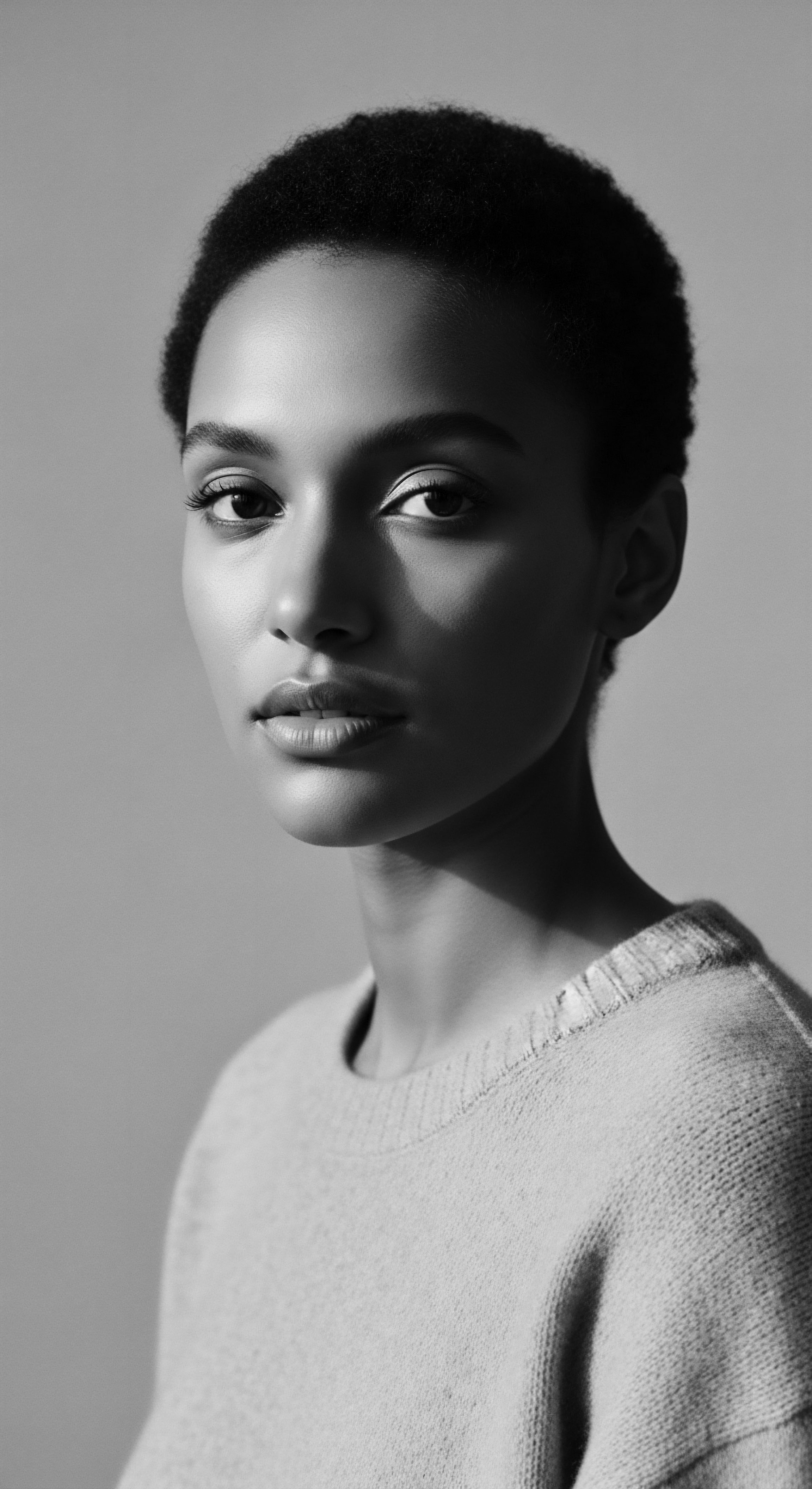
Early Understandings of Hair’s Vitality
The understanding of hair’s vitality in ancestral contexts was often intertwined with observations of nature and the human body. Just as a sturdy tree requires nourishment from the soil and protection from the elements, so too was hair seen as a living extension, requiring mindful tending. The traditional use of shea butter, derived from the nuts of the African shea tree, stands as a profound example.
For centuries, across West Africa, this butter has been a staple in hair care, recognized for its exceptional moisturizing and protective properties. Its application was not simply about softness; it was about creating a resilient barrier, safeguarding the hair from harsh sun and wind, and promoting its overall robustness.
This ancient knowledge, honed over millennia, implicitly addressed the very elements that modern science now attributes to Keratin Strength ❉ the need for hydration to maintain flexibility, the shielding of the outer cuticle, and the provision of nutrients to the hair shaft. The practice of protective styling, such as intricate braiding and coiling, also played a crucial role. These styles minimized manipulation, reduced exposure to external stressors, and allowed the hair to retain its natural moisture, thereby preserving its inherent structural integrity. Such practices were not merely aesthetic choices; they were intelligent adaptations, born from deep observation and a profound respect for the hair’s natural capabilities.
- Shea Butter ❉ A cornerstone of West African hair care, this natural emollient provides deep moisture and protection, acting as a shield against environmental challenges and promoting overall hair strength.
- Coconut Oil ❉ Widely used in various indigenous hair traditions, this oil penetrates the hair shaft, reducing protein loss and contributing to the hair’s enduring resilience.
- Yucca Root ❉ Employed by Native American tribes as a natural cleansing agent, yucca root produces a gentle lather that cleanses without stripping the hair’s natural oils, helping to maintain its inherent strength.
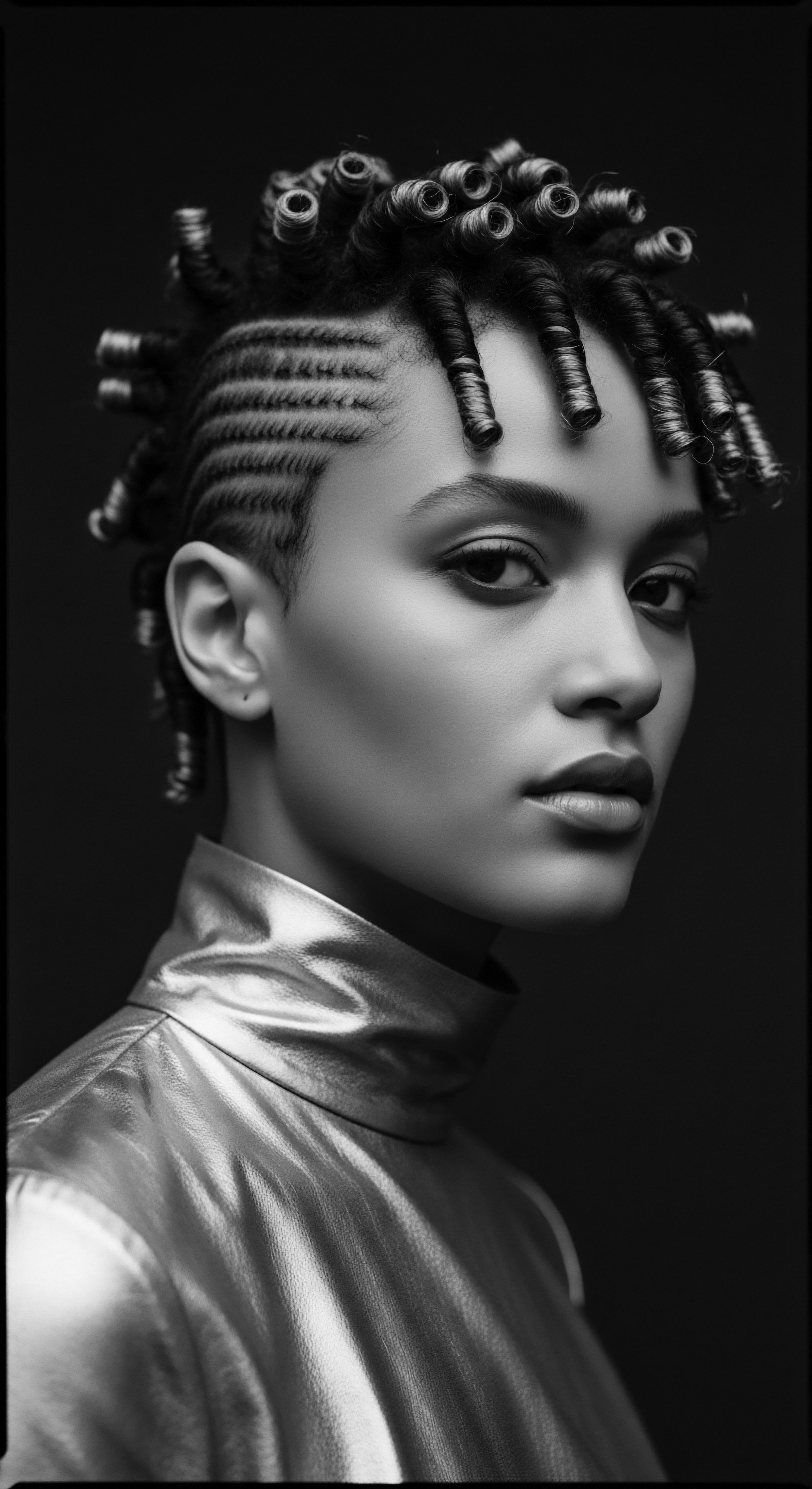
Intermediate
Building upon the foundational recognition of Keratin Strength, an intermediate understanding deepens the exploration into the intricate dance between hair’s biological composition and its lived experience, particularly for those with textured hair. This perspective acknowledges that Keratin Strength is not a static attribute, but a dynamic state influenced by genetic inheritance, environmental factors, and the continuum of care practices passed down through generations. The hair shaft, a filamentous biomaterial primarily composed of keratin, reveals its complexity under closer examination.
These keratin proteins are arranged in a hierarchical structure, from coiled-coil dimers at the molecular level to intermediate filaments and macro-fibrils within the cortex. The precise alignment and bonding of these structures determine the hair’s mechanical properties, including its elasticity, tensile strength, and resistance to breakage.
For hair that coils and kinks, the distribution of keratin within the cortex is not always uniform. This uneven distribution contributes to the characteristic curl patterns, where the hair bends at points of heavier keratin concentration. This inherent structural variation means that textured hair, while possessing remarkable flexibility and volume, can also present areas of relative vulnerability to external forces. The outermost layer, the cuticle, with its overlapping scales, serves as the first line of defense.
When these scales are smooth and tightly sealed, the hair appears shiny and feels soft, effectively protecting the inner cortex. Conversely, raised or damaged cuticles can lead to increased porosity, moisture loss, and susceptibility to breakage, compromising the hair’s Keratin Strength.
The inherent Keratin Strength of textured hair is a testament to its unique architecture, demanding a thoughtful approach to care that honors its ancestral legacy.
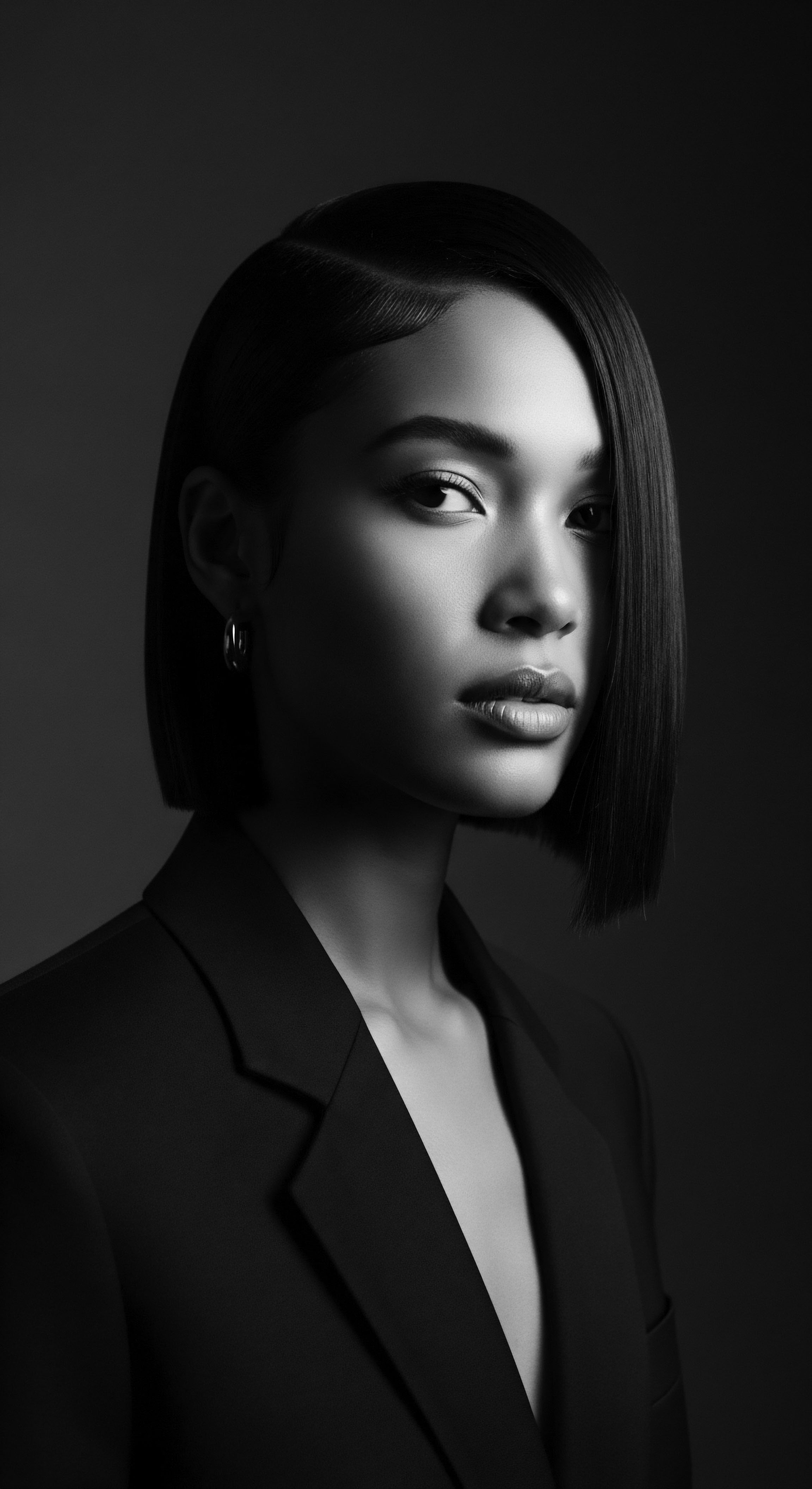
The Intricate Architecture of Textured Strands
The architectural marvel of textured hair lies in its elliptical or flattened cross-section and its unique follicular shape, which causes the hair to grow in a helical or spiral manner. This distinct morphology results in numerous points of curvature along the hair shaft. Each bend represents a potential stress point, where the hair can be more prone to tangling and, subsequently, breakage if not handled with mindful consideration.
The cuticle layers, which typically lie flat on straight hair, tend to be more lifted or open on textured strands, making them more susceptible to moisture loss and external damage. This inherent openness necessitates a heightened focus on moisture retention and protective measures to preserve the hair’s Keratin Strength.
Moreover, the density of disulfide bonds—strong chemical linkages within the keratin proteins—plays a significant role in determining the hair’s curl pattern and its overall structural integrity. Tightly coiled hair, for instance, exhibits a greater number of these bonds, contributing to its springy nature. While these bonds contribute to the hair’s shape, their disruption, whether through harsh chemical treatments or excessive heat, can severely compromise the Keratin Strength, leading to irreversible damage.
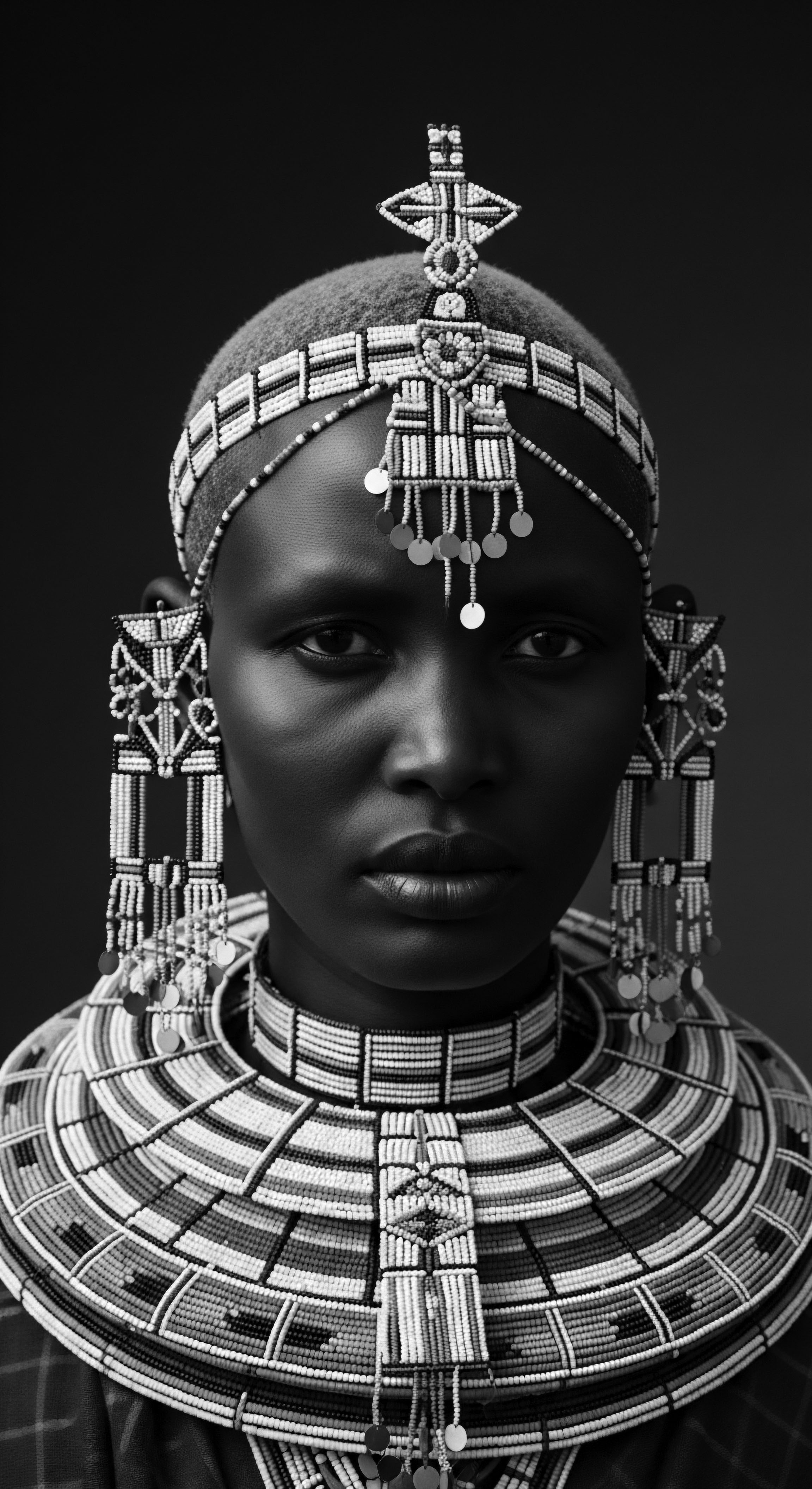
Generational Wisdom in Hair Preservation
The wisdom embedded in ancestral hair care practices, particularly within Black and mixed-race communities, offers profound insights into preserving Keratin Strength without the lexicon of modern science. These traditions, often dismissed as mere folk remedies, are now increasingly recognized for their efficacy and scientific grounding. The consistent application of natural oils and butters, such as shea butter, coconut oil, and various indigenous plant extracts, was not simply about aesthetics. These substances provided a protective barrier, sealed in moisture, and delivered essential fatty acids and vitamins that nourished the hair shaft, contributing to its elasticity and preventing dryness-induced breakage.
Consider the widespread practice of hair oiling across African and diasporic communities. This ritual, often performed weekly or bi-weekly, involves massaging oils into the scalp and along the hair strands. This practice stimulates blood circulation to the scalp, promoting a healthy environment for hair growth, while the oils themselves coat the hair, reducing friction and minimizing damage during styling. This systematic approach to care, rooted in an understanding of the hair’s needs for lubrication and protection, directly supports the maintenance of Keratin Strength over time.
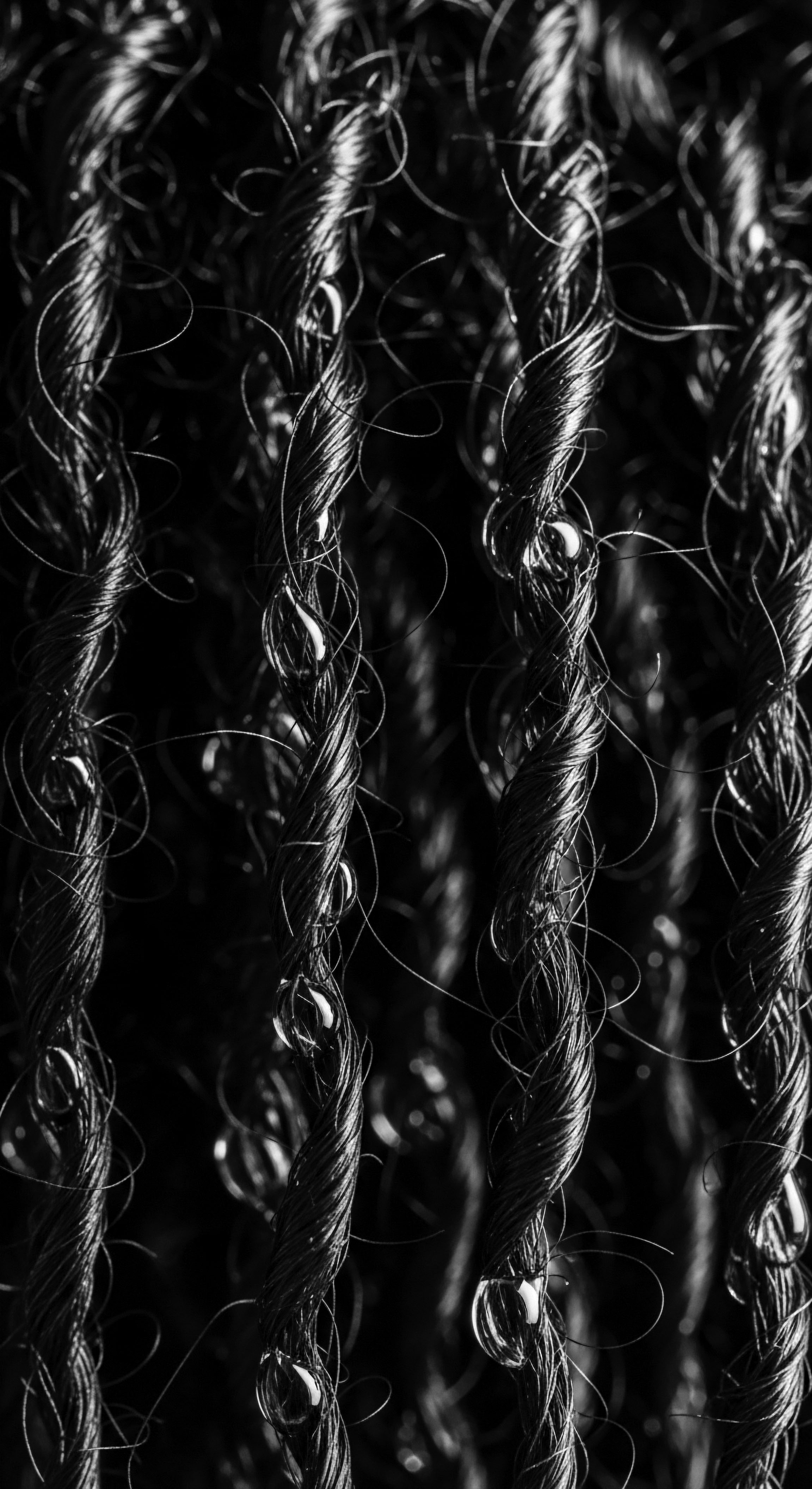
The Role of Moisture and Elasticity
For textured hair, moisture is not merely a desirable quality; it is a fundamental requirement for maintaining Keratin Strength. Dry hair becomes brittle, less pliable, and more prone to snapping. The natural curl patterns of textured hair make it more challenging for sebum, the scalp’s natural oil, to travel down the entire length of the hair shaft, leading to inherent dryness. Therefore, external moisture application becomes paramount.
Traditional practices often incorporated ingredients known for their humectant and emollient properties, drawing moisture from the air and sealing it into the hair. Aloe vera, for instance, used by various indigenous tribes, provides exceptional hydration and soothing benefits for the scalp. The deliberate layering of products, such as applying a water-based moisturizer followed by an oil or butter sealant, a technique now popularized as the “LOC method” (Liquid, Oil, Cream), mirrors ancestral wisdom of sealing in hydration.
This layered approach helps to maintain the hair’s optimal moisture balance, which in turn preserves its elasticity—the ability of the hair to stretch and return to its original state without breaking. Hair with good elasticity is a clear indicator of robust Keratin Strength, allowing textured strands to move freely and resist the stresses of daily manipulation.
The deliberate choice of tools also speaks to this understanding. Wide-toothed combs and finger-detangling, common in many traditional hair care routines, minimize tension and breakage, preserving the delicate structure of textured hair. These methods contrast sharply with the aggressive brushing or fine-toothed combing often associated with straighter hair textures, which can inflict significant mechanical damage on coily strands.
- Moisture Retention ❉ Essential for preventing brittleness, particularly for textured hair where natural oils may not easily coat the entire strand. Traditional practices often used humectants and emollients.
- Protective Styling ❉ Techniques like braiding, twisting, and coiling minimize manipulation and exposure to environmental stressors, thereby safeguarding the hair’s structural integrity.
- Gentle Detangling ❉ The use of wide-toothed combs or fingers reduces mechanical stress on delicate strands, preserving Keratin Strength.
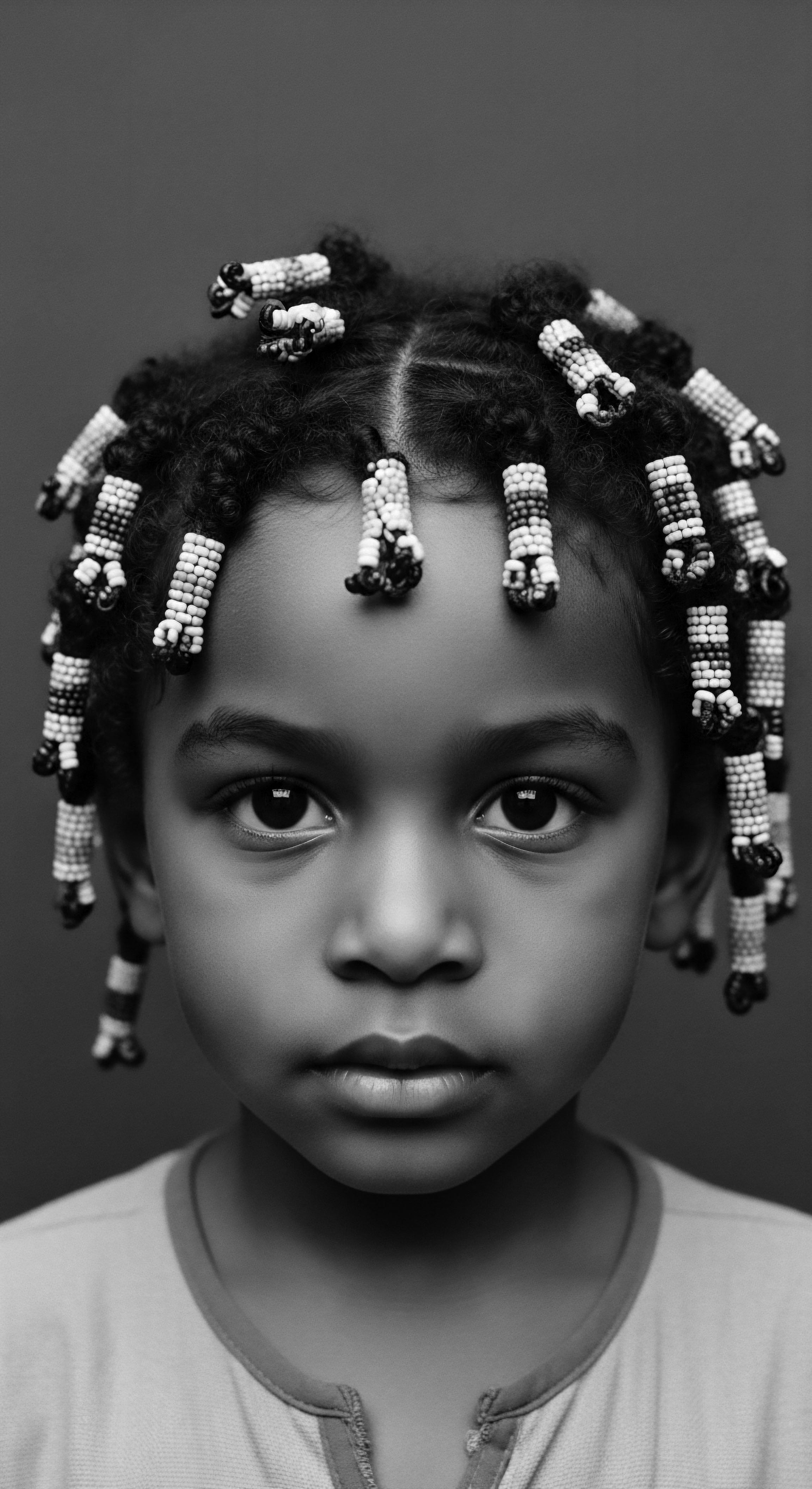
Academic
The academic elucidation of Keratin Strength transcends a mere description of hair’s composition; it represents a comprehensive investigation into the biomechanical properties of hair, its molecular architecture, and the profound implications these have for hair health, particularly within the diverse spectrum of textured hair. This deep examination necessitates a multidisciplinary lens, drawing from material science, biochemistry, and the rich insights of cultural anthropology. The term ‘Keratin Strength’ in this context refers to the collective measure of a hair strand’s tensile strength, elasticity, and resistance to mechanical, chemical, and thermal degradation, all underpinned by the integrity of its keratin protein network. The human hair shaft, a complex biological fiber, consists predominantly of alpha-keratins, a family of structural proteins.
These proteins form highly organized intermediate filaments within the cortex, embedded in a matrix of keratin-associated proteins. The robust nature of these filaments, stabilized by a network of disulfide bonds between cysteine amino acid residues, provides hair with its remarkable mechanical properties.
The unique helical and sometimes flattened cross-sectional geometry of textured hair, stemming from its curved follicular origin, results in an anisotropic distribution of cortical cells and keratin bundles. This structural asymmetry contributes to the formation of distinct curl patterns, yet also introduces inherent stress concentrations at the points of curvature. Consequently, textured hair, while displaying considerable extensibility, often exhibits a lower breaking stress compared to straight hair, rendering it more susceptible to fracture under tension, particularly when dry. A sophisticated understanding of Keratin Strength, therefore, involves recognizing these intrinsic structural nuances and their direct bearing on the optimal care regimens for coily, kinky, and wavy hair types.
A nuanced comprehension of Keratin Strength for textured hair reveals the intricate interplay of molecular biology, environmental stressors, and the enduring legacy of ancestral care practices.
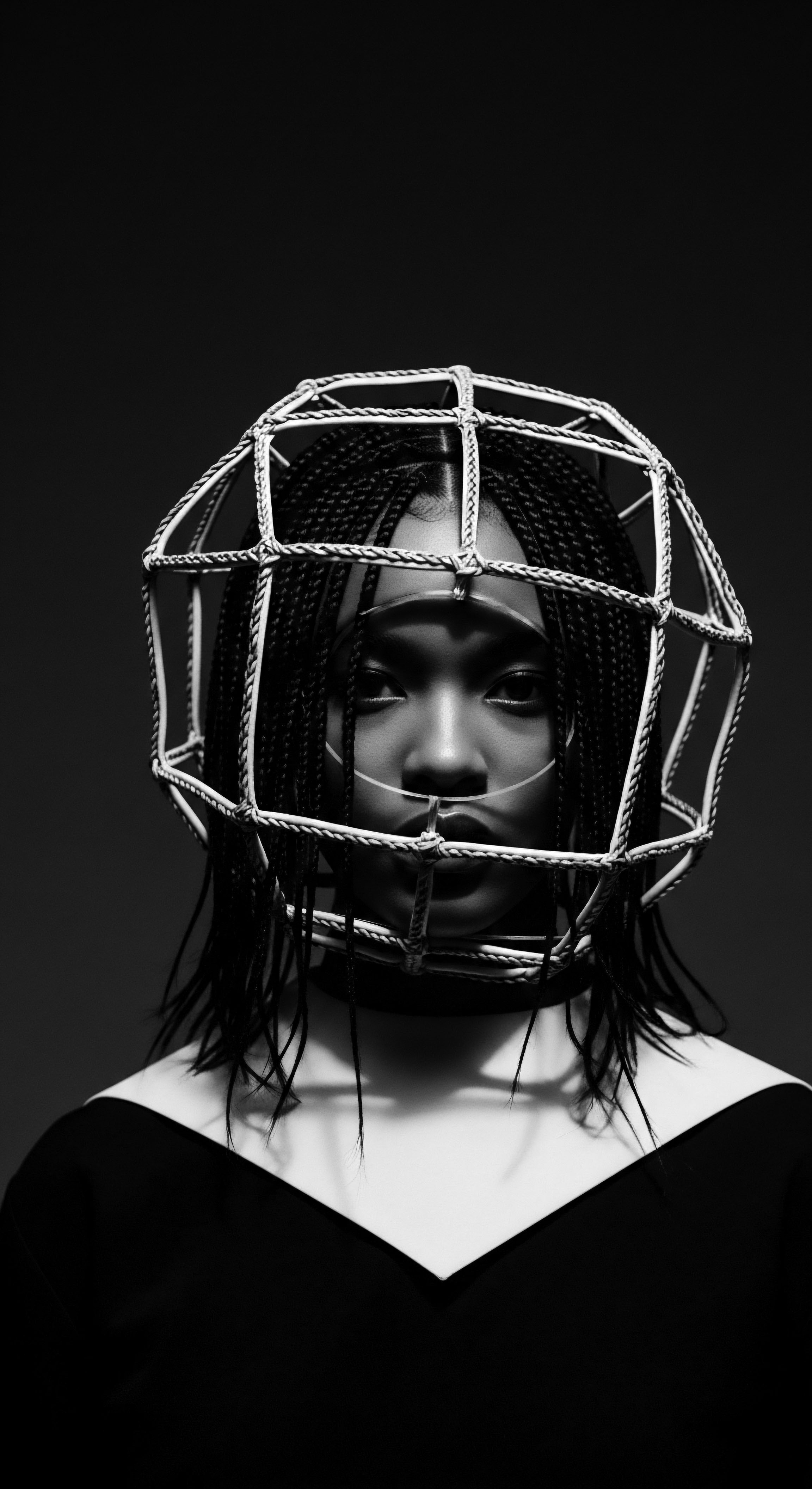
Biomechanical Properties and Ancestral Resilience
The biomechanical characteristics of hair, including its ability to stretch and resist breaking, are direct reflections of its Keratin Strength. Textured hair, with its unique structural variations, presents a fascinating subject for biomechanical analysis. The numerous twists and turns along the hair shaft mean that mechanical forces, such as those from combing or styling, are distributed unevenly, leading to localized stress points. This can explain why textured hair, despite its apparent robustness, can be prone to breakage if not handled with appropriate techniques.
From an ancestral perspective, many traditional practices can be understood as intuitive applications of biomechanical principles. The use of natural lubricants, such as various plant oils and butters, serves to reduce the coefficient of friction between hair strands, thereby minimizing mechanical abrasion during manipulation. This reduction in friction helps to preserve the integrity of the cuticle, the hair’s primary protective layer, which in turn safeguards the underlying keratinous cortex.
The deliberate choice of low-manipulation styles, including braids, twists, and locs, also mitigates the frequency and intensity of mechanical stress, allowing the hair to retain its natural strength over extended periods. This ancestral wisdom, refined over generations, speaks to an implicit, yet profound, understanding of hair’s structural needs.
Moreover, the incorporation of ingredients rich in fatty acids and vitamins, such as shea butter (Vitellaria paradoxa) and coconut oil (Cocos nucifera), provides exogenous lipids that can supplement the hair’s natural lipid barrier. These lipids contribute to the hair’s hydrophobicity, helping to repel excess water and reduce hygral fatigue—the weakening of hair through repeated swelling and shrinking from water absorption and desorption. By mitigating hygral fatigue, these ancestral applications contribute directly to the long-term maintenance of Keratin Strength.
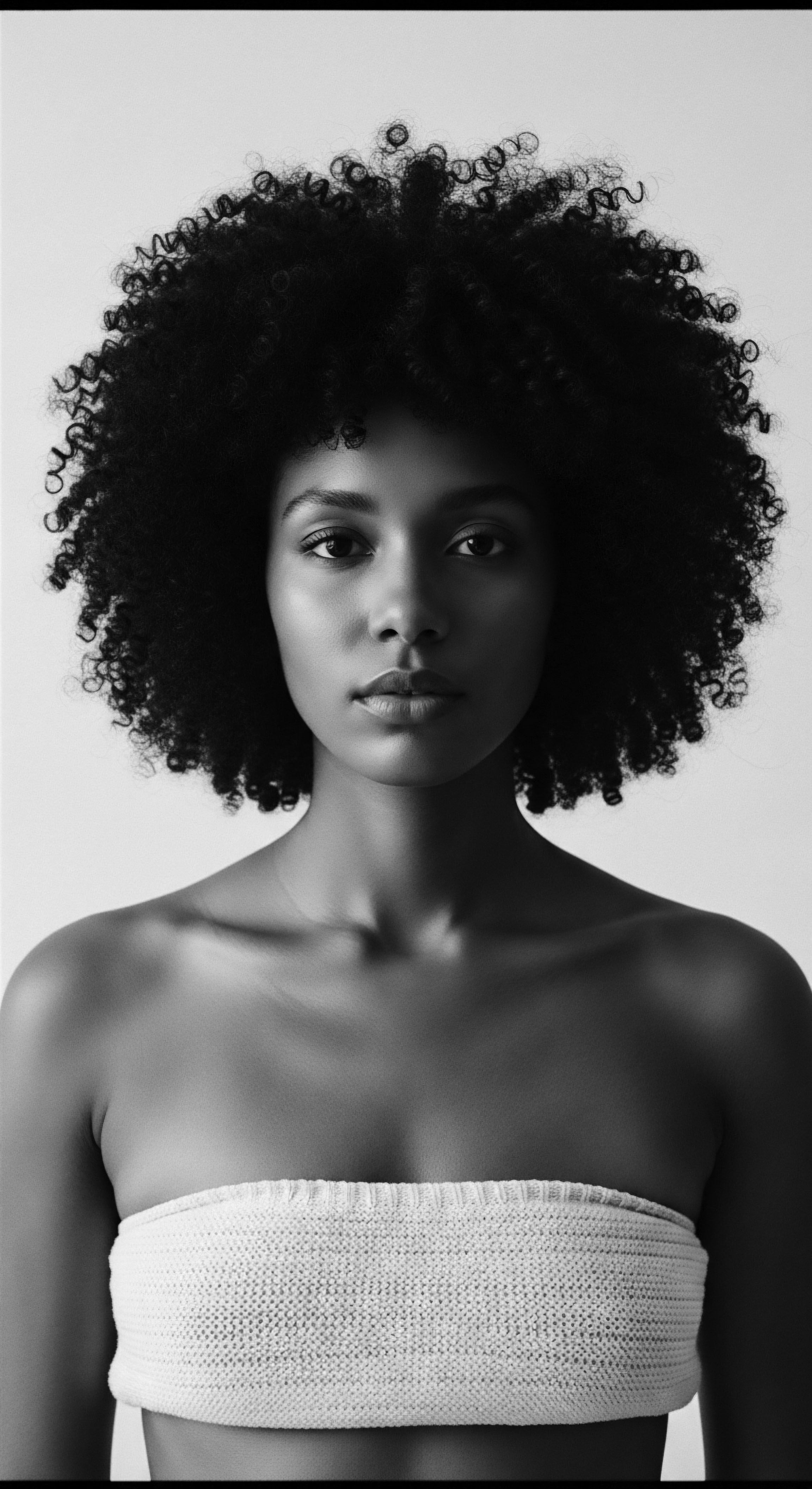
The Historical Echoes of Chemical Alteration
The historical trajectory of hair care within Black and mixed-race communities is inextricably linked to societal pressures and the often-damaging impact of chemical alterations on Keratin Strength. The advent of chemical relaxers in the early 20th century marked a significant, yet complex, turning point. These formulations, typically containing strong alkaline agents like lye, operate by disrupting the hair’s disulfide bonds, thereby permanently altering its natural curl pattern.
While offering a perceived ease of styling and conformity to Eurocentric beauty standards, this process fundamentally compromises the hair’s inherent structural integrity. The breakage of these vital chemical bonds diminishes the hair’s tensile strength and elasticity, leaving it more vulnerable to breakage, dryness, and environmental damage.
The widespread adoption of chemical straightening, particularly in the mid-to-late 20th century, led to a generational legacy of compromised hair health for many individuals of African descent. The repeated application of these harsh chemicals, often at short intervals, contributed to scalp irritation, hair thinning, and chronic breakage. This period highlights a stark contrast between ancestral practices, which prioritized the preservation of natural hair, and the imposed beauty ideals that often necessitated methods detrimental to Keratin Strength.
The natural hair movement, which gained significant momentum in the 1960s and again in the early 2000s, represents a powerful reclamation of inherent hair identity and a deliberate return to practices that honor and protect the hair’s natural state. This movement advocates for the avoidance of chemical relaxers and a renewed appreciation for the diverse textures of Black hair, signaling a collective shift towards nurturing Keratin Strength rather than chemically altering it.
| Era/Community Pre-colonial African Societies |
| Traditional Practice Application of natural butters (e.g. shea), oils, and herbs; protective styling (braids, twists). |
| Impact on Keratin Strength (Scientific Interpretation) These practices provided lubrication, sealed moisture, and reduced mechanical stress, thereby preserving the cuticle and cortex integrity, enhancing elasticity and tensile strength. |
| Era/Community Post-slavery African Diaspora (Early 20th Century) |
| Traditional Practice Widespread use of chemical relaxers and hot combs to straighten hair. |
| Impact on Keratin Strength (Scientific Interpretation) Chemical relaxers permanently broke disulfide bonds within keratin, severely compromising hair's structural integrity, leading to increased breakage and reduced elasticity. Hot combs caused thermal damage to the cuticle and cortex. |
| Era/Community Contemporary Natural Hair Movement |
| Traditional Practice Return to natural textures, use of moisture-rich products, low manipulation styling. |
| Impact on Keratin Strength (Scientific Interpretation) Prioritizes hydration and minimal mechanical/chemical stress, allowing the hair's natural keratin structure to thrive, leading to improved elasticity, reduced breakage, and enhanced overall Keratin Strength. |
| Era/Community The evolution of hair care within textured hair communities reflects a dynamic interplay between ancestral wisdom, imposed standards, and a powerful reclamation of intrinsic hair health and identity. |
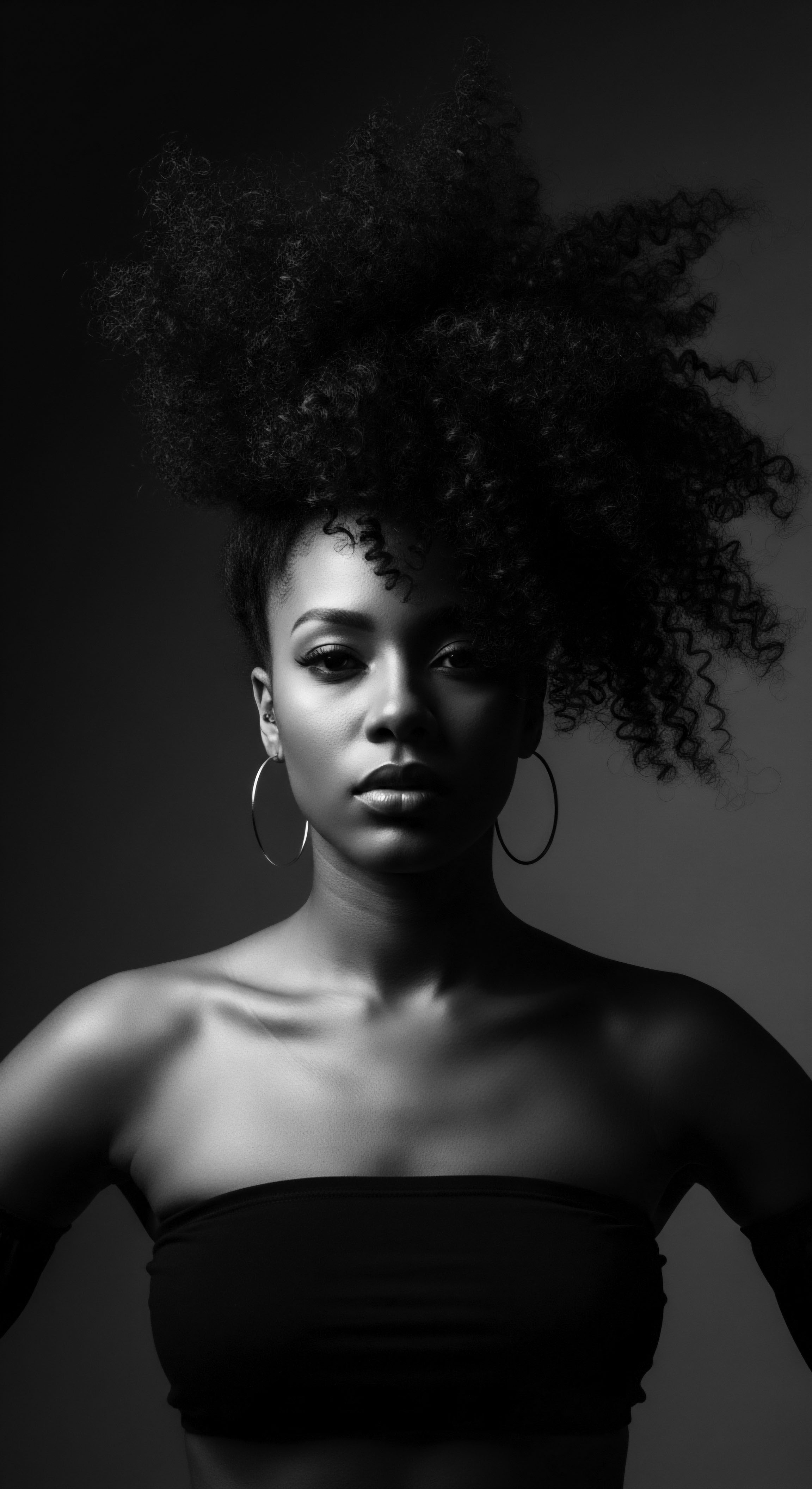
Reclaiming Narrative ❉ Decolonizing Hair Science
The pursuit of understanding Keratin Strength, particularly for textured hair, is deeply intertwined with the imperative to decolonize hair science. For too long, the dominant scientific discourse around hair has been predicated on Eurocentric models, often marginalizing or misinterpreting the unique characteristics and needs of coily and kinky textures. This historical bias has sometimes led to a deficit-based approach, viewing textured hair as inherently “fragile” or “difficult,” rather than recognizing its distinct structural properties and inherent resilience. Decolonizing hair science means actively challenging these historical narratives and centering the experiences and knowledge systems of Black and mixed-race communities.
This reclamation involves a critical examination of how research is conducted, which hair types are studied, and how findings are interpreted. It calls for a shift from comparing textured hair to straight hair as a “norm,” towards understanding textured hair on its own terms, appreciating its unique biomechanics, and validating the efficacy of traditional care practices through rigorous scientific inquiry. For instance, the uneven distribution of keratin along the shaft of textured hair, which contributes to its characteristic bends, was once framed as a weakness. A decolonized perspective recognizes this as a design feature that allows for extraordinary volume and styling versatility, requiring specific, informed care rather than alteration.
The work of scholars and practitioners who highlight the historical significance of hair in African cultures, such as the intricate systems of communication and status embedded in hairstyles, contributes to this decolonization. By integrating these cultural contexts into scientific inquiry, a more holistic and respectful understanding of Keratin Strength emerges, one that celebrates the inherent diversity of human hair. This approach acknowledges that true hair wellness extends beyond mere physical condition, encompassing psychological well-being, cultural affirmation, and ancestral connection.

A Case Study ❉ The Mbalantu Women and Enduring Hair Strength
To truly grasp the profound meaning of Keratin Strength within the context of textured hair heritage, one must consider the remarkable practices of the Mbalantu Women of Namibia. Their centuries-old tradition of cultivating incredibly long, robust hair, known as Eembuvi Plaits, stands as a powerful, living testament to ancestral knowledge and its direct impact on maintaining hair integrity over a lifetime. This is not merely an anecdote; it represents a sophisticated, generational understanding of hair physiology, long before the advent of modern biochemistry.
The journey to achieving eembuvi plaits begins early in a Mbalantu girl’s life, around the age of twelve. At this tender age, their hair is coated with a thick paste crafted from the finely ground bark of the Omutyuula Tree (Acacia reficiens) blended with animal fat or oil. This initial application remains on the hair for several years, forming a protective sheath that is said to significantly speed up hair growth and enhance its overall strength. As the girls progress through different life stages, marked by initiation ceremonies, their hair undergoes further transformations, with new layers of this bark and oil mixture applied, and sinew strands or fruit pips attached to elongate the plaits.
The scientific interpretation of this ancestral practice reveals a sophisticated, albeit intuitive, approach to preserving Keratin Strength. The omutyuula bark, likely rich in tannins or other plant compounds, could have provided a natural astringent or protective layer, while the fat/oil component offered deep conditioning and a sealant against environmental damage. This constant coating and low-manipulation styling, maintained for decades, drastically reduces mechanical stress, minimizes moisture loss, and shields the hair from UV radiation and physical abrasion.
Consider the extraordinary length achieved ❉ Mbalantu women are renowned for hair that can reach their thighs, a feat rarely seen in any hair type, let alone naturally coarse textures. This sustained length, maintained over many decades, offers compelling evidence of exceptional Keratin Strength. It is a stark counterpoint to the often-repeated narrative that highly textured hair cannot achieve significant length due to inherent fragility.
Instead, the Mbalantu tradition demonstrates that with consistent, protective, and deeply nourishing care, rooted in a profound understanding of the hair’s needs, remarkable longevity and strength are entirely possible. This case study underscores that the knowledge of hair’s true potential, and how to preserve its Keratin Strength, has long resided within ancestral practices, waiting for modern science to catch up and offer its own validation.
- Omutyuula Bark ❉ A key ingredient in the Mbalantu hair paste, this tree bark likely contributes protective compounds, enhancing the hair’s resilience.
- Animal Fat/Oil Blends ❉ Combined with the bark, these provide deep conditioning, moisture sealing, and a physical barrier against environmental damage, preserving hair integrity.
- Low-Manipulation Styling ❉ The long-term maintenance of eembuvi plaits minimizes daily styling stress, allowing the hair’s keratin structure to remain undisturbed and strong.

Reflection on the Heritage of Keratin Strength
As we draw our exploration of Keratin Strength to a close, the echoes of ancestral wisdom reverberate with compelling clarity. The journey from the molecular composition of a single strand to the intricate coiffures of ancient communities reveals a profound truth ❉ the hair’s enduring strength is not merely a biological fact, but a living legacy, a testament to resilience, identity, and the timeless bond between humanity and the earth. Roothea’s ‘living library’ seeks to honor this connection, understanding that each curl, each coil, each wave carries within it stories of survival, adaptation, and beauty.
The understanding of Keratin Strength, particularly within the context of textured hair, moves beyond scientific diagrams and into the realm of soulful appreciation. It reminds us that the hair on our heads is not separate from our being, nor from the collective experiences of those who came before us. The meticulous care rituals, the sacred use of plants and oils, the protective styling traditions – these were not random acts.
They were deliberate, informed expressions of love and respect for hair, born from generations of observation and an intuitive grasp of its fundamental needs. This inherited knowledge, often passed down through whispered stories and gentle hands, is a precious inheritance.
In an era that often prioritizes rapid fixes and superficial transformations, pausing to truly understand Keratin Strength through the lens of textured hair heritage invites a deeper, more mindful approach to care. It encourages us to listen to our hair, to understand its inherent structure, and to honor the wisdom of our ancestors who instinctively knew how to preserve its vitality. The future of hair care, particularly for textured strands, lies not in discarding the past, but in thoughtfully integrating the validated insights of science with the profound, embodied knowledge of traditional practices.
This integration allows us to approach hair wellness not as a trend, but as a continuous act of honoring our lineage, nurturing our strands, and celebrating the boundless beauty of our unique hair stories. The strength within each strand, we find, is inextricably linked to the strength of our heritage.
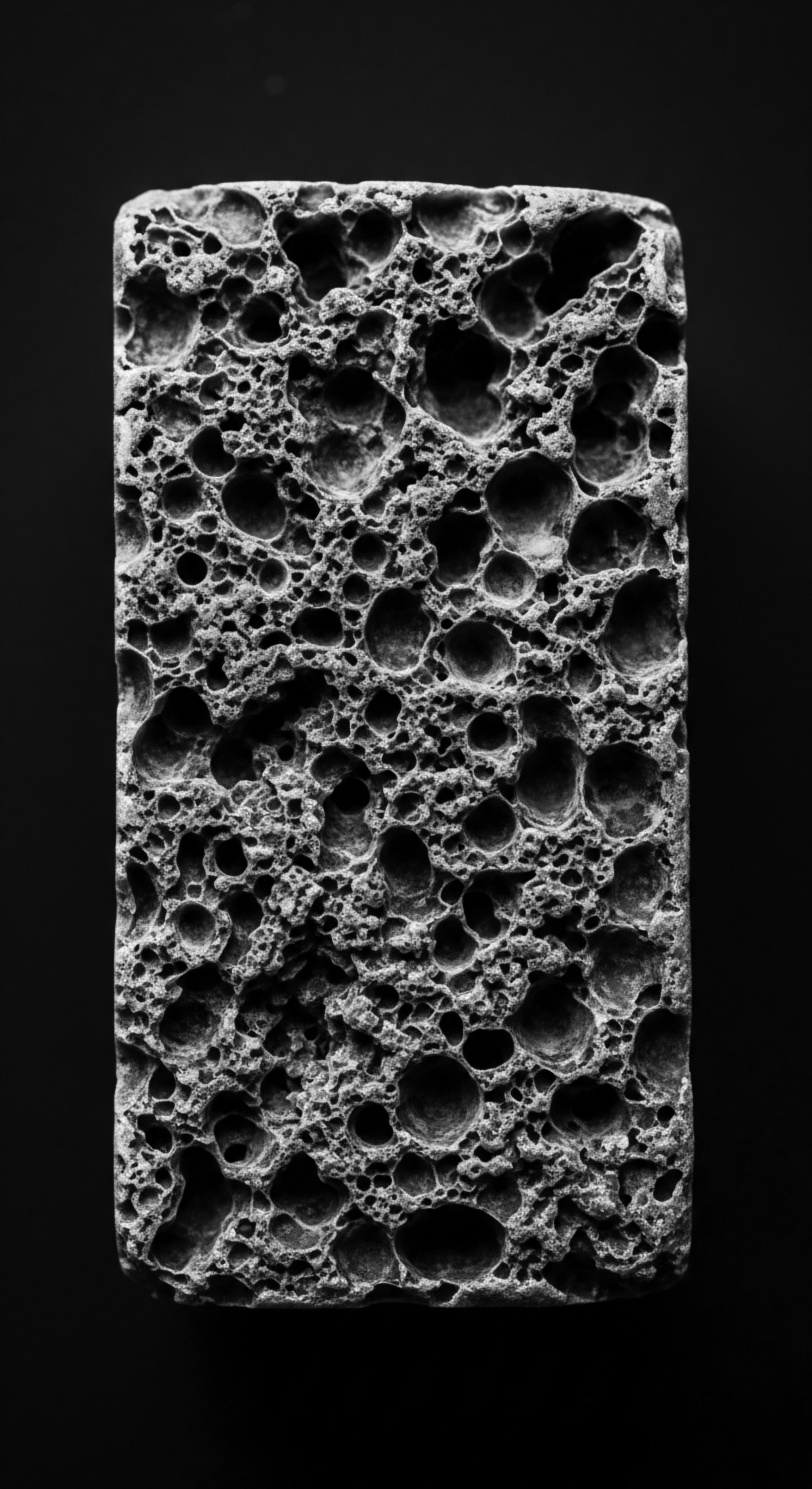
References
- Byrd, A. & Tharps, L. D. (2014). Hair Story ❉ Untangling the Roots of Black Hair in America. St. Martin’s Press.
- Corson, R. (2003). Fashions in Hair ❉ The First Five Thousand Years. Peter Owen Publishers.
- Davis-Sivasothy, A. (2011). The Science of Black Hair ❉ A Comprehensive Guide to Textured Hair Care. Sivasothy Publishing.
- Banks, I. (2000). Hair Matters ❉ Beauty, Power, and Black Women’s Consciousness. New York University Press.
- Robbins, C. R. (2012). Chemical and Physical Behavior of Human Hair (5th ed.). Springer.
- Tharps, L. (2021, January 28). Tangled Roots ❉ Decoding the history of Black Hair. CBC Radio.
- Khumalo, N. P. (2008). On the history of African hair care ❉ more treasures await discovery. Journal of Cosmetic Dermatology, 7(3), 231.
- Mbilishaka, A. M. Clemons, K. Hudlin, M. et al. (2020). Don’t get it twisted ❉ untangling the psychology of hair discrimination within Black communities. American Journal of Orthopsychiatry, 90(5), 590-599.
- Pauling, L. & Corey, R. B. (1950). The structure of synthetic polypeptides. Proceedings of the National Academy of Sciences of the United States of America, 36(7), 356-368.
- Randebrook, S. (1964). Hair and Scalp Diseases ❉ A Medical and Surgical Atlas. Lea & Febiger.
- George, A. (2011). Decolonizing Science and Science Education in a Postcolonial Space.
- Byrd, A. & Tharps, L. (2001). Hair Story ❉ Untangling the Roots of Black Hair in America. St. Martin’s Press.
